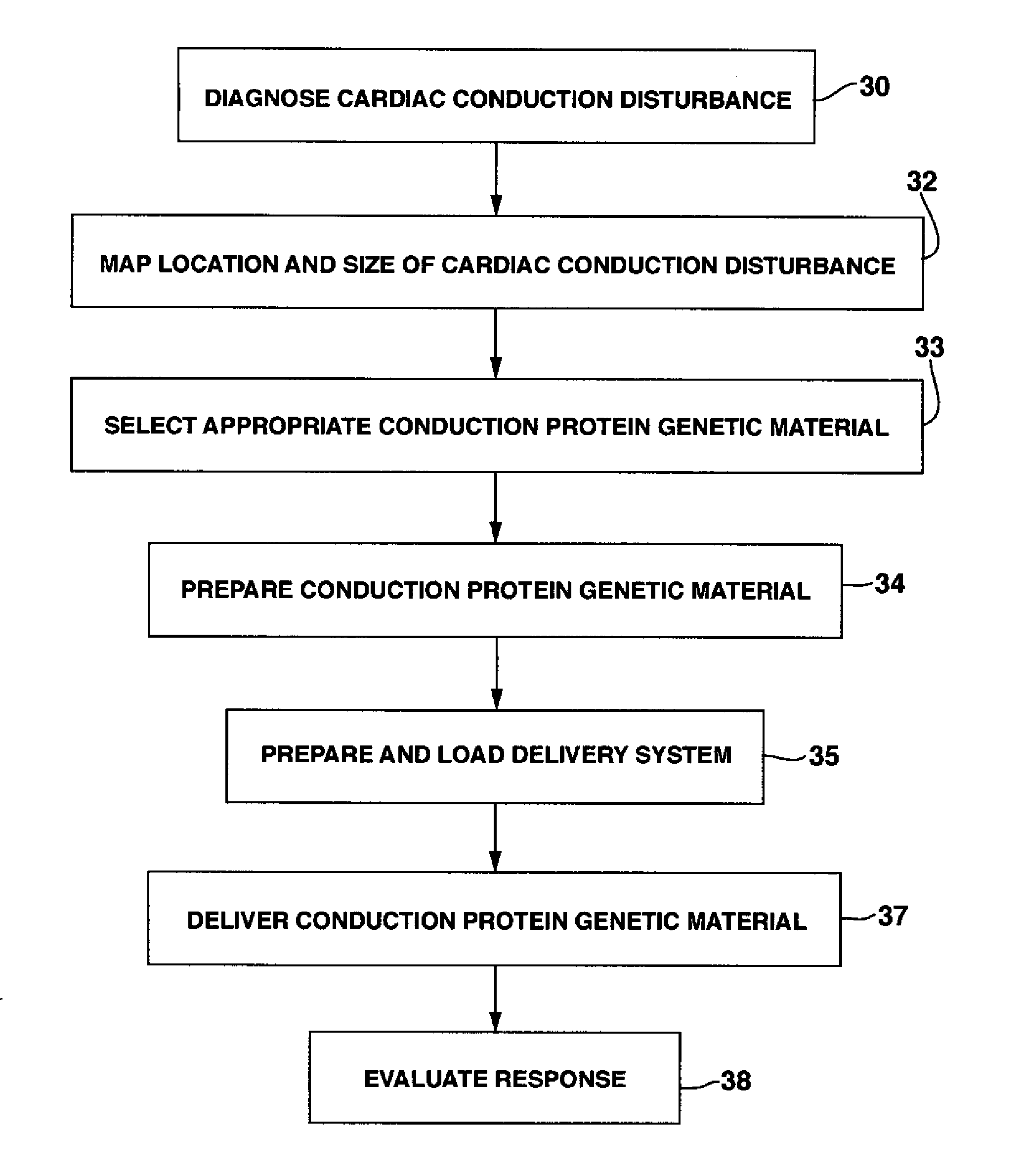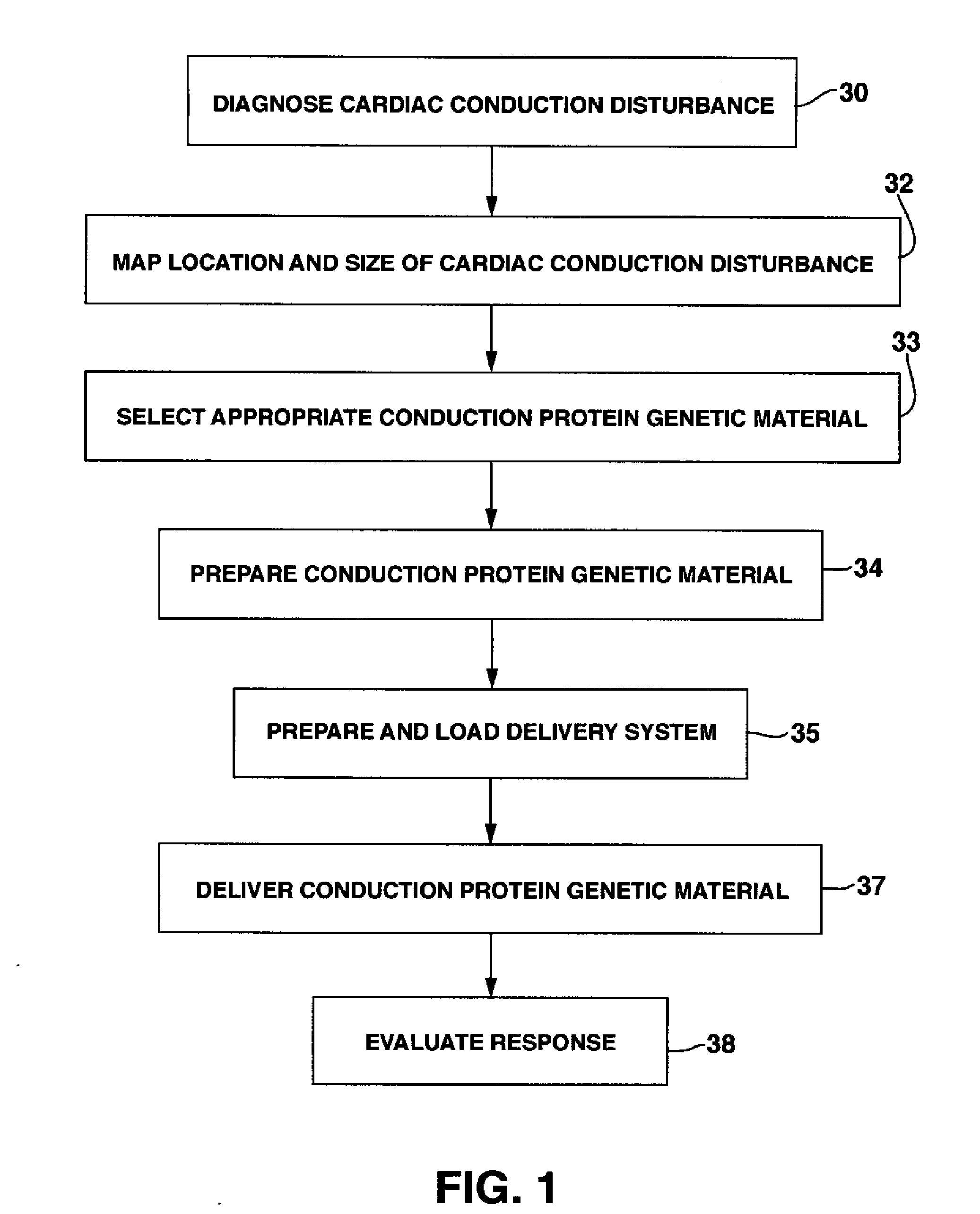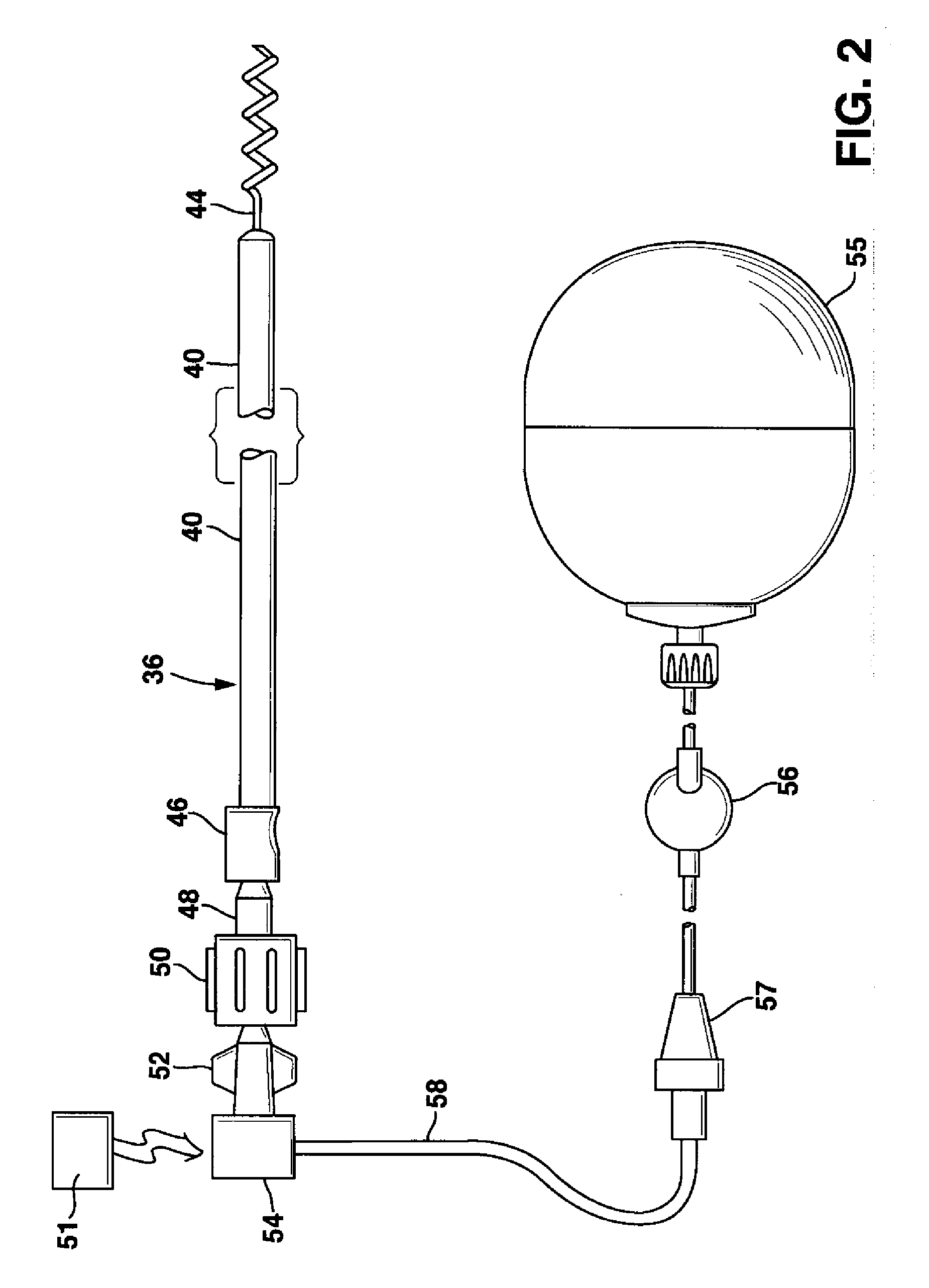System and Method for Genetically Treating Cardiac Conduction Disturbances
a technology of genetic treatment and conduction disturbance, applied in magnetotherapy, medical preparations, intravenous devices, etc., can solve the problems of serious heart disease, abnormal cardiac cycle, and death of patients, so as to improve cardiac conduction, improve cardiac conduction, and improve cardiac conduction. effect of cell cardiac conduction
- Summary
- Abstract
- Description
- Claims
- Application Information
AI Technical Summary
Benefits of technology
Problems solved by technology
Method used
Image
Examples
example 1
Isolation and Purification of Nucleic Acid Molecules Encoding the Connexin Proteins
[0062] Nucleic acid molecules encoding Cx43, Cx40, and Cx45 are isolated and purified according to general methods well known to those skilled in the art. Briefly, total cellular RNA is isolated and purified (Chomczynsky, et al., Anal. Biochem., 1987, 162, 156-159) from heart tissue, cardiac transplantation donors, or from salvaged tissue, and selected for poly(A) RNA (Sambrook et al., Molecular Cloning: A Laboratory Manual, Second Ed. Cold Spring Harbor Press (1989), pp. 7.26-7.29). cDNA corresponding to the connexin proteins is prepared from the poly(A) cardiac RNA by reverse transcription using a GENEAMP™ PCR kit (Perkin Elmer Cetus, Norwalk, Conn.), or the like, using random hexamers according to the manufacturer's instructions. The specific connexin nucleic acid molecules are amplified by the polymerase chain reaction (PCR), also using the GENEAMP™ PCR kit, or the like, using forward and reverse...
example 2
Insertion of Connexin cDNA into Delivery Vehicles
[0063] Preferably, connexin cDNA is inserted into either plasmid or adenoviral vectors. Plasmid vectors include for example, pGEM3 or pBR322, as set forth in Acsadi, et al., The New Biol., 1991, 3, 71-81, and Gal, et al., Lab. Invest., 1993, 68, 18-25. Adenoviral vectors include for example, adenovirus serotype 5, Ad5, as set forth in French, et al., Circulation, 1994, 90, 2414-2424.
[0064] Preferably, the primers used to amplify the connexin nucleic acid molecules are designed with unique endonuclease restriction sites located at the 5′ terminus. In the absence of such design, polylinker arms, containing unique restriction sites, can be ligated thereto. After cutting the purified PCR products with the appropriate restriction endonuclease(s), the plasmid vector, comprising a polylinker, is also cut with the same restriction endonuclease(s), affording the connexin nucleic acid molecule a site at which to ligate. In a similar manner, r...
PUM
| Property | Measurement | Unit |
|---|---|---|
| pressure | aaaaa | aaaaa |
| cardiac cell conductivity | aaaaa | aaaaa |
| conduction | aaaaa | aaaaa |
Abstract
Description
Claims
Application Information
 Login to View More
Login to View More - R&D
- Intellectual Property
- Life Sciences
- Materials
- Tech Scout
- Unparalleled Data Quality
- Higher Quality Content
- 60% Fewer Hallucinations
Browse by: Latest US Patents, China's latest patents, Technical Efficacy Thesaurus, Application Domain, Technology Topic, Popular Technical Reports.
© 2025 PatSnap. All rights reserved.Legal|Privacy policy|Modern Slavery Act Transparency Statement|Sitemap|About US| Contact US: help@patsnap.com



